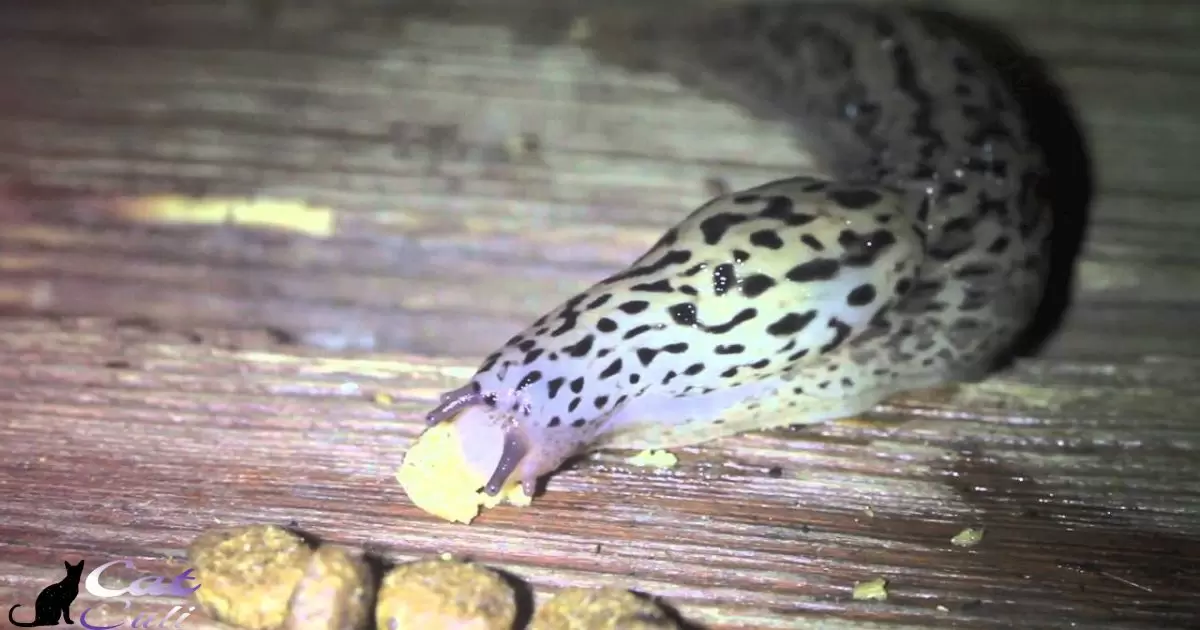Slugs may eat cat food if it’s left outside. Their appetite for organic matter leads them to consume various foods, including pet food. However, slugs prefer decaying plants or fruits over pet food. They might be attracted to the moistness and scent of cat food but won’t typically rely on it as their main source of nutrition.
Ever wondered, Do slugs eat cat food? Prepare to uncover the surprising truth behind these slimy creatures’ potential penchant for feline cuisine. Join the exploration into the peculiar world of slugs and their unexpected dietary preferences, shedding light on whether cat food makes it onto their menu.
Stay tuned to discover whether slugs have a taste for cat food! While these creatures typically feast on decaying plants and organic matter, the allure of pet food might intrigue them. Join us to delve into whether cat food holds any appeal for these fascinating, slime-trailing critters.
What Happens If A Cat Licks A Slug?
When a cat licks a slug, it might experience excessive drooling or even vomiting. The slime on the slug’s skin can cause irritation or discomfort in the cat’s mouth or digestive system. Cats might display signs of distress or discomfort after encountering slugs due to the substances present on their skin, prompting reactions like drooling or sickness.
Keep an eye on your cat if it comes into contact with slugs as a precaution. Monitoring for symptoms such as drooling, vomiting, or unusual behaviour can help ensure your pet’s well-being. It’s essential to act swiftly and seek veterinary advice if your cat displays any concerning reactions after licking or interacting with slugs.
How Do I Get Rid Of Slugs Who Steal Outside Cat Food ?
To keep slugs away from outdoor cat food, try these simple steps. First, place the cat food bowl on a raised platform or inside a shallow pan filled with water the slippery surface deters slugs.
Next, create a barrier using natural repellents like coffee grounds, citrus peels, or diatomaceous earth around the feeding area. Consider using a slug-specific bait or trap to lure them away from the cat food.Another effective method is to remove any hiding spots near the feeding area, such as tall grass or debris.
Regularly clean up fallen food and keep the area dry to discourage slug activity. By implementing these proactive measures, you can prevent slugs from sneaking in for a free meal and ensure your outdoor cat’s food remains slug-free.
Why Slugs Comes For Cats’ Food?
Slugs are attracted to the scent and moisture of cat food left outdoors. Their preference usually leans toward decaying plant matter, but the aroma of pet food can entice them. They come for the cat food due to its accessible location and the inviting scent that piques their interest.
The outdoor placement of cat food often exposes it to the elements, creating an appealing environment for slugs. Their nocturnal habits lead them to explore and feed during the night, finding their way to the cat food that remains within their reach.
7 Effective Ways To Keep Slugs Away From Cat Food
- Elevate the Food: Place the cat food bowls on raised platforms or shelves to make it harder for slugs to reach.
- Use Natural Barriers: Create barriers using materials like diatomaceous earth, crushed eggshells, or copper tape around the feeding area.
- Regular Cleaning: Clean up any spilled food promptly to eliminate attracting scents and remove potential feeding grounds.
- Time-limited Feeding: Offer food during specific times and remove it afterward, reducing the window for slugs to access the food.
- Citrus Peels: Place citrus peels around the feeding area as slugs tend to avoid the scent of citrus fruits.
- Salt-Free Solutions: Use salt-free alternatives like coffee grounds or vinegar sprays around the feeding spot to deter slugs.
- Keep Areas Dry: Ensure the feeding area remains dry as slugs are attracted to moisture; using a sheltered feeding spot can help.
Where Do Slugs Comes From?
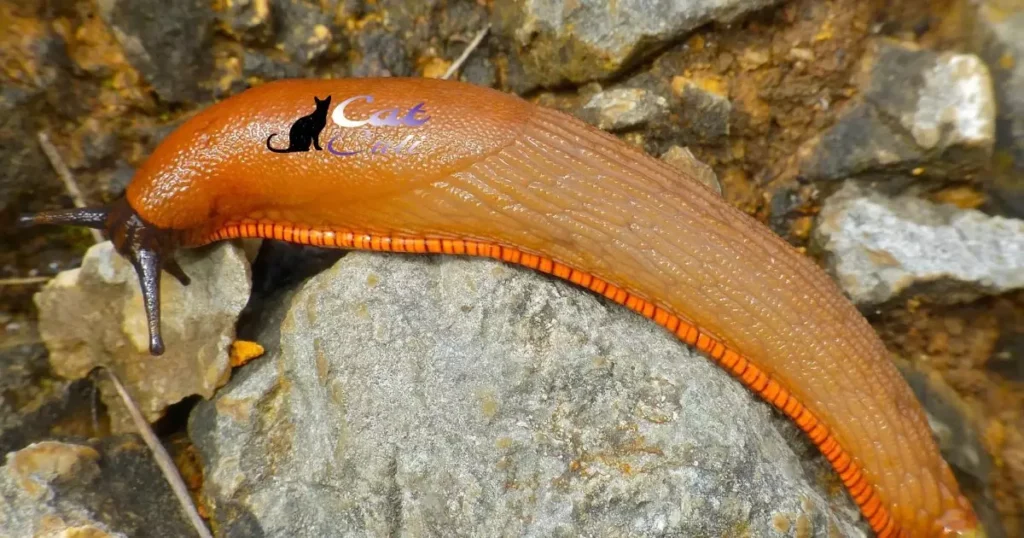
Slugs originate from outdoor environments like gardens, forests, and damp areas worldwide. They hatch from eggs laid in moist soil or hidden, sheltered spots. These creatures thrive in humid climates, emerging from their eggs ready to roam and feed on vegetation.
They find their way into gardens, often hitchhiking on plants or through soil transported from other areas. Slugs are masters of hiding in damp nooks, making them challenging to detect until they start munching on plants. Their ability to travel unnoticed allows them to appear mysteriously in gardens seemingly out of nowhere.
How To Identify A Slug In Your Garden?
Look for a slimy trail, indicating their movement across surfaces. Check for holes in leaves or irregular chew marks, often signs of slug feeding. They Still Make Puss N Boots Cat Food is an effective bait option; placing it strategically can lure slugs. Observe the garden during the evening or early morning when slugs are most active to catch them in action.
Identifying a slug involves examining its appearance: they’re elongated, soft-bodied creatures with no visible shell. Their colour ranges from gray to brown or even black, and they move using a distinctive rippling motion. By keeping an eye out for these telltale signs and characteristics, you can accurately identify slugs in your garden.
Why You Should Keep Slugs Out Of Your Cat’s Food Dish?
Slugs in your cat’s food dish? Not a great combo! These slimy critters might munch on the cat’s food, potentially spreading germs or parasites. Keeping slugs away helps maintain your pet’s health by preventing contamination of their meal.
Protect your furry friend by ensuring their food remains slug-free. It’s a simple step toward their well-being!When slugs invade the cat’s feeding area, they pose health risks. They could transmit parasites or bacteria, impacting your cat’s health.
Avoiding slug infestation in the food bowl safeguards your pet’s meals, keeping them safe from potential illnesses. A slug-free feeding zone means a healthier dining experience for your feline companion!
Additional Tips For Keeping Slugs Out From Cat Food
| Tips for Keeping Slugs Out From Cat Food |
| 1. Use Elevated Platforms: Place cat food dishes on raised platforms or stands to make it difficult for slugs to reach. |
| 2. Employ Natural Repellents: Sprinkle coffee grounds, diatomaceous earth, or salt around the feeding area as natural barriers against slugs. |
| 3. Regular Cleaning Routine: Clean the feeding area regularly to remove food debris that might attract slugs. |
| 4. Timely Feeding: Feed your cat during the day and pick up any uneaten food at night to reduce the chances of slug attraction. |
| 5. Try Citrus Peels: Place citrus peels around the food dishes as slugs tend to avoid the acidity. |
Does Cat Food Attract Slugs?
Cat food may attract slugs due to its scent and moisture. Slugs are drawn to organic matter, and the aroma of cat food might tempt them. Their attraction to the food’s smell leads them to investigate and potentially consume it.
Slugs primarily prefer decaying plants and fruits as their main food source. While cat food might catch their interest, it’s not their go-to meal option. The scent and dampness could entice them momentarily, but it’s unlikely to become a significant part of their diet.
Are Slugs Harmful To Cats?
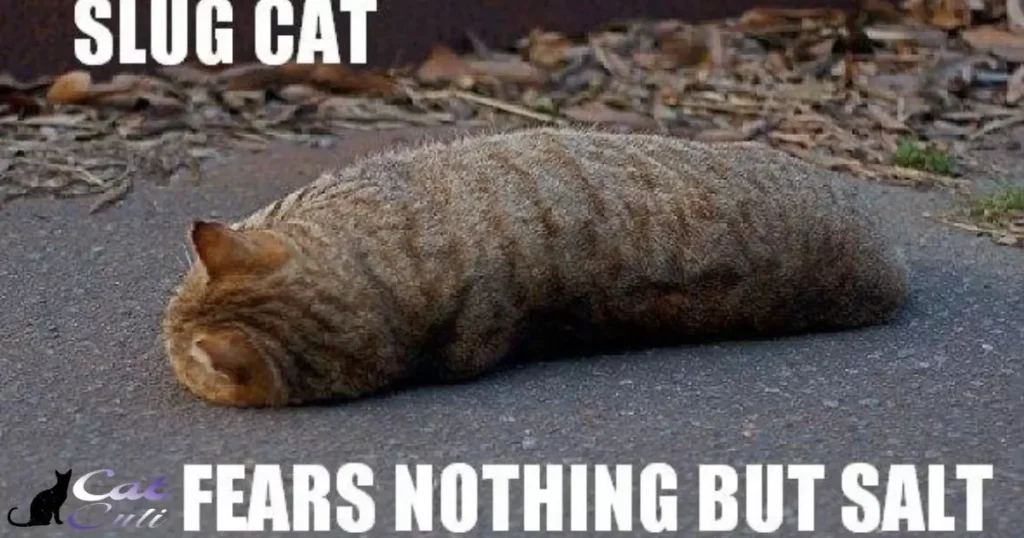
Slugs might pose a risk to cats if ingested due to potential parasite transmission. Cats may encounter slugs outdoors and, if consumed, could contract lungworm or other infections from these gastropods.
Vigilance in preventing cats from eating slugs is crucial to safeguard their health, as these encounters can lead to health complications.Not all slugs carry diseases harmful to cats, and incidents of slug ingestion are infrequent.
Nonetheless, it’s prudent to discourage cats from playing with or eating slugs to prevent any potential health issues. Regular vet check-ups can ensure timely detection and treatment if your cat has interacted with these creatures.
How Do You Keep Slugs Away From Cat Food?
To protect cat food from slugs, try elevating the bowls on platforms or shelves. Keep the feeding area clean by wiping up spills promptly. Sprinkle a barrier of diatomaceous earth or coffee grounds around the food bowls – slugs dislike crossing these substances.
Regularly inspect the feeding area and remove any hiding spots for slugs, like moist, dark areas near the food bowls.Consider using natural repellents like citrus peels or mint leaves placed strategically around the feeding zone.
Another effective method is using copper tape or barriers, as slugs avoid surfaces that produce a slight electric charge. Combine these strategies to create a slug-resistant zone around your cat’s food, keeping those pesky critters at bay.
Why Do Cats Eat Slugs And Snails?
- Curiosity and Play: Cats are naturally curious hunters. They might chase and consume slugs or snails out of curiosity or playfulness.
- Texture and Movement: The movement and slimy texture of slugs and snails can trigger a cat’s predatory instincts, enticing them to investigate and sometimes ingest these creatures.
- Nutritional Need: In some cases, cats might consume slugs or snails seeking specific nutrients, although these creatures aren’t a primary source of nutrition for felines.
- Behavioural Instincts: Hunting behaviours are innate in cats. Eating slugs or snails could be an expression of their hunting instincts, regardless of the actual nutritional value.
Slug Proof Cat Bowl
Keep slugs away from your cat’s bowl with a Slug Proof Cat Bowl! This innovative solution ensures that your feline’s meal remains slug-free. The specialized design deters these slimy creatures, ensuring your pet’s food stays clean and untouched by unwanted visitors.
Enjoy peace of mind knowing that your cat’s dining experience remains undisturbed by pesky slugs.The Slug Proof Cat Bowl provides a reliable barrier against slugs, safeguarding your cat’s food.
Its smart construction prevents these critters from reaching the food, keeping it fresh and hygienic for your furry friend. Say goodbye to slug invasions and hello to a hassle-free feeding routine with this effective and convenient solution.
How To Keep Slugs Away From Cat Food
Protecting cat food from slugs is simple! Place the cat food bowls on elevated platforms or use trays filled with water, creating barriers that slugs won’t cross. Sprinkle diatomaceous earth or use copper tape around the feeding area; slugs avoid these substances.
Keeping the area clean and removing leftover food promptly also discourages slug visits.Another effective method is to use natural repellents like coffee grounds, citrus peels, or salt around the cat food bowls.
These items deter slugs due to their strong scents or abrasive textures. Regularly inspecting and maintaining the feeding area ensures a slug-free zone for your cat’s meals.
How To Keep Slugs Away From Dog Food
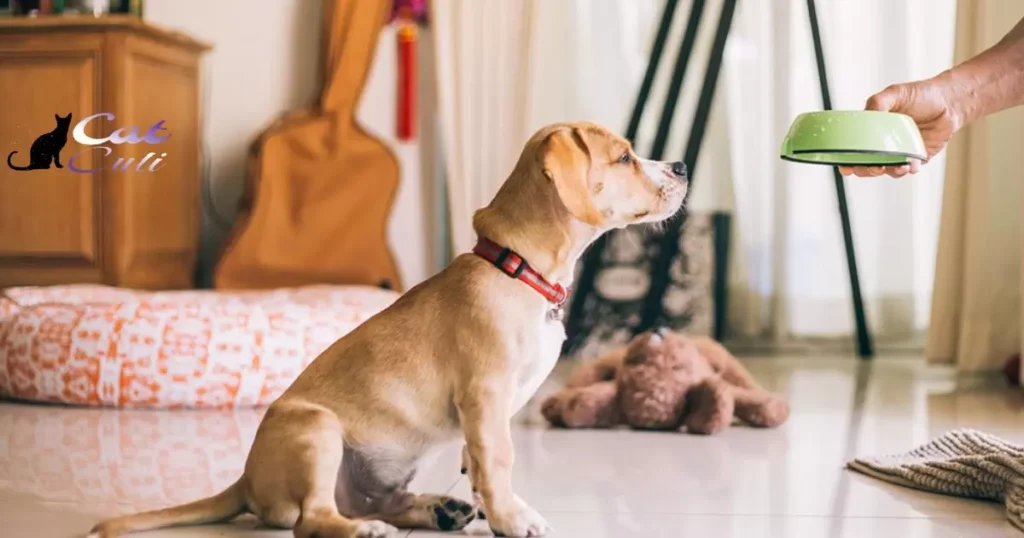
Keep slugs from dog food by placing the bowl in a shallow pan filled with soapy water. Surround the bowl with a barrier of salt, as slugs avoid it. Consider elevating the bowl on a stand or platform to create an obstacle for slugs reaching the food easily.
Another effective method is to use copper tape around the feeding area. Slugs dislike touching copper, deterring them from crossing the barrier to get to the dog food. Regularly cleaning the area and removing any fallen food scraps will also discourage slug activity near your dog’s feeding spot.
Are Slugs Harmful To Cats
Slugs can pose a risk to cats if ingested. Their slime contains parasites that might cause health issues if consumed by felines. Cats may show symptoms like vomiting or diarrhea if they’ve eaten slugs. Keeping cats away from areas where slugs roam can help prevent potential harm.
It’s essential to monitor cats if they’ve encountered slugs. Direct contact or ingestion can lead to health complications. Being vigilant and creating barriers between slugs and cats can safeguard your furry friends from any potential harm these creatures might cause.
Copper Cat Food Bowl
The Copper Cat Food Bowl offers a stylish and functional option for your feline friend’s dining experience. This bowl boasts durability and a sleek design, making it an attractive addition to your home. Its copper construction ensures longevity and easy maintenance, providing a hygienic feeding solution for your beloved pet.
With its non-toxic properties, the Copper Cat Food Bowl guarantees a safe eating environment for your cat. Its resistance to bacterial growth adds an extra layer of assurance for your pet’s well-being. This bowl’s anti-slip base prevents unnecessary spills, keeping mealtime mess-free and your floors clean.
Pressure Pad Cat Feeder
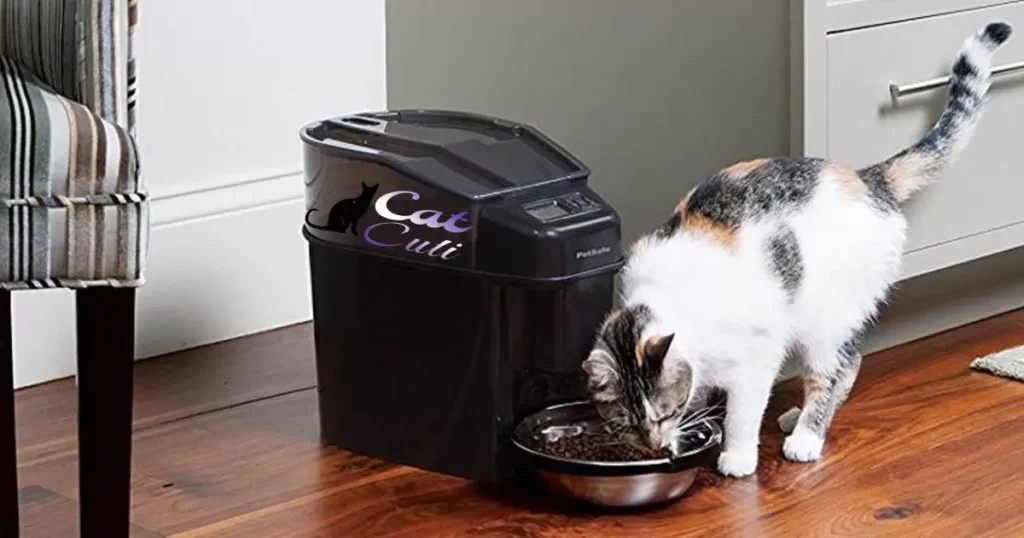
The pressure pad cat feeder is an innovative device that operates on the principle of a pressure-sensitive pad. When a cat steps onto the pad, it triggers the release of food into the bowl. This feeder is designed to provide food on demand, ensuring that your cat can access nourishment whenever they feel hungry.
Owners find this feeder convenient as it helps regulate their cat’s meal times and prevents overfeeding by dispensing controlled portions based on the cat’s interaction with the pad. Users appreciate the simplicity of the pressure pad cat feeder, as it eliminates the need for scheduled feeding times.
The responsive mechanism ensures that food is dispensed only when the cat interacts with the pad, promoting a healthy eating routine. It’s a user-friendly solution that fosters autonomy for cats while maintaining a balanced diet and preventing excessive eating throughout the day.
FAQ’s
Can snails eat cat food?
Yes, snails can eat cat food. They’re omnivorous, consuming various organic matter, including pet food, if available.
Are slugs toxic to cats?
Some slugs can be toxic if ingested by cats. Lungworms carried by slugs pose health risks to cats.
How do you get rid of slugs when you have a cat?
Avoid harmful chemicals. Use pet-safe methods like barriers, copper tape, or diatomaceous earth to deter slugs.
What is the best food for slugs?
Decaying plants, fruits, and organic matter are favourites. They’re attracted to moist, rotting vegetation.
Conclusion
In conclusion, the question: Do slugs eat cat food? highlights the intriguing dietary behaviours of these creatures. While slugs primarily opt for decaying plants and organic matter, they may nibble on cat food if available. It’s not their primary choice due to the lack of essential nutrients.
Understanding the diverse eating habits of slugs sheds light on their role in the ecosystem. Their preference for organic decay highlights their vital role in breaking down matter. So, while slugs might show interest in cat food, it’s just a passing curiosity in their quest for a more natural feast amidst the garden’s offerings.
